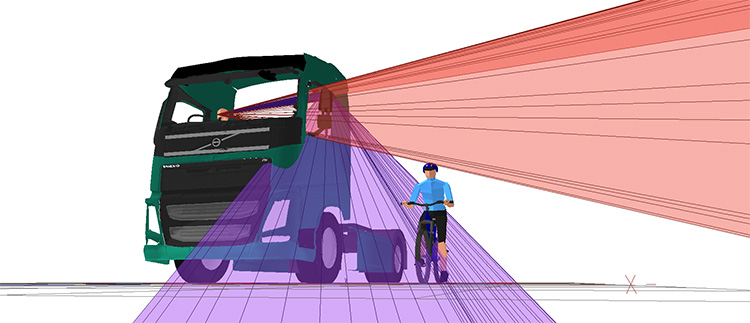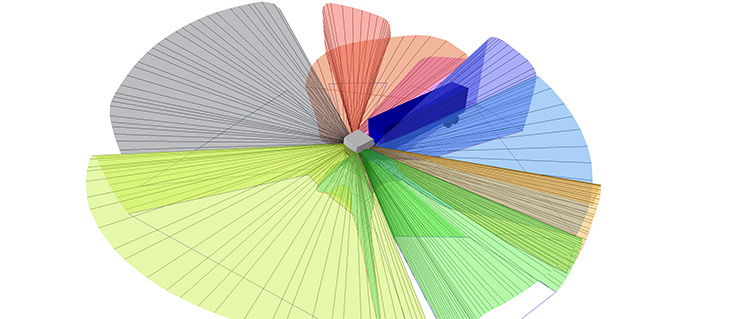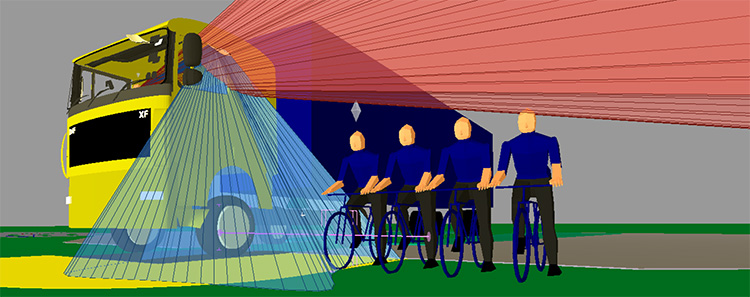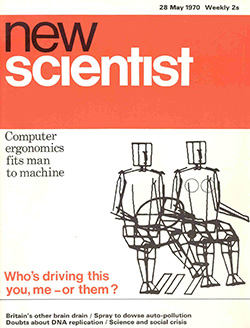Driver Vision from HGVs
‘Driver vision from HGVs’ has been an active research area for the SAMMIE CAD team for 6 six years, including three projects with a combined £370,000 of funding from the UK Department for Transport (DfT), Transport for London (TfL) and Transport and Environment.
The first project performed at Loughborough Design School (LDS) involved a commission from the DfT in order to explore the size and location of truck blinds spots. This resulted in the development of a unique analysis technique which allows the quantification and visualisation of blind spots through the combination of direct vision (through windows) and indirect vision (through mirrors).


Volumetric field of view projection: (left) the semi-transparent projections show the volume of space that is visible to a driver through one mirror (purple in colour) and the through the passenger window (red in colour); (right) projection of all of the mirrors and windows for one truck projected simultaneously,
which allows gaps in driver vision to be identified.
The project ultimately identified the presence of a key blind spot which is capable of hiding a cyclist or car depending upon the vehicle configuration that is being analysed. The results were used by the DfT in collaboration with the SAMMIE team to revise a key European standard (UNECE Regulation 46) at the United Nations Economic Commission for Europe General Safety Meeting in April of 2011. This standard specifies the area of coverage of truck mirrors. The amendment to the standard removes the blind spot and came into force in July of 2015, with new trucks registered after that date being required to have improved mirror designs based upon the revised standard.

An illustration of the blind spot identified in the DfT project which led to the revision of UNECE Reg. 46.
The full project report for the DfT work can be accessed through the Loughborough University Insitutional Repository. The full project included the work described here and also the analysis of passenger car and mini van blind spots, along with other ‘real world’ work performed by colleagues at the LDS which examine the effectiveness of after-market technologies and products to improve driver situational awareness.






